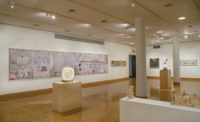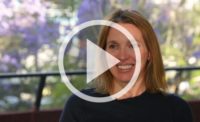Cooper Union Exhibit Highlights Thesis Projects From Notable Alums

Archive and Artifact displays a selection of noteworthy undergraduate thesis projects dating from 1969 until 2018.
Photo courtesy The Irwin S. Chanin School of Architecture Archive, The Cooper Union

Daniel Libeskind, Collage, 1969-70
Photo courtesy The Irwin S. Chanin School of Architecture Archive, The Cooper Union

Stanley Allen, The Theater of Production,1980-81
Photo courtesy The Irwin S. Chanin School of Architecture Archive, The Cooper Union

Karen Bausman, One-Way Bridge, 1981-2
Photo courtesy The Irwin S. Chanin School of Architecture Archive, The Cooper Union

Peter Sweeny, Museum of/and Joint(s), 1983-84
Photo courtesy The Irwin S. Chanin School of Architecture Archive, The Cooper Union

Edward Arcari, Construction Site, 1985-86
Photo courtesy The Irwin S. Chanin School of Architecture Archive, The Cooper Union

Emily Nguyen, Kodi: Monuments, 2010-11
Photo courtesy The Irwin S. Chanin School of Architecture Archive, The Cooper Union







Archive and Artifact: The Virtual and the Physical is “both an exhibition and a glimpse of what’s to come,” says its curator Steven Hillyer, who heads the Irwin S. Chanin School of Architecture Archive at The Cooper Union. The show, which opened to a packed crowd last Tuesday night at the school’s Arthur A. Houghton Jr. gallery, displays a selection of noteworthy undergraduate thesis projects dating from 1969 until 2018, including those of Liz Diller, Stan Allen, and Karen Bausman. It also offers visitors an exclusive preview to the archive’s forthcoming digital database, which will provide public access to a comprehensive photographic collection of student work.
The projects on view represent those that have been selected over the years by professors—including the School of Architecture’s founding dean John Hejduk, Anthony Vidler, Peggy Deamer, Lebbeus Woods, and Eva Franch i Gilabert—to document the school’s commitment to pedagogy. They also provide insight, says Hillyer, into how the ethos of renowned alumni, such as Diller, Daniel Libeskind, and Laurie Hawkinson, were shaped (some famous graduates, such as Shigeru Ban and Toshiko Mori, are not on display). “Students tend to not value their early academic work in a creative way,” says Hillyer, “they don’t realize how important these formative works are.”
While the works in Archive and Artifact represent a range of philosophies and thought processes, they are connected in their strong conceptual roots—a testament to the lasting influence of Hejduk and his preference for a theoretical approach instead of a conventional one. “Pedagogical questions are often asked in indirect ways so that students may have the space to discover the didactic motives through the process of research,” says current dean Nader Tehrani. The projects on view are mostly devoid of programs, and even buildings; they range from a spatial study of Christ’s path to crucifixion to a one-way bridge to nowhere. According to Tehrani, students are not asked to produce means to ends, but, rather, ideas in and of themselves.
One might be surprised by the lack of digital representation. Concepts are conveyed via drawings rendered in meticulous detail, collages, handmade models, and other physical creations. “In the 90’s, when paperless studios unilaterally advocated for digital protocols, Cooper Union did not follow suit," says Tehrani, "In retrospect, it generated a positive outcome insofar as it allowed the school to ask more fundamental questions about the nature of representation.”
The online platform, which rolls out next year, will include images of drawings, architectural models, supplemental material, and even review transcripts from the works in Archive and Artifact. The result of a five-year digitization effort, the database, funded in large part by grants, will be one of the most comprehensive online collections of student architecture work in the United States.
What is clear from Archive and Artifact is The Cooper Union’s old-school dedication to craft and the process of making, despite the ubiquity of digital tools in architecture schools today, as well as an emphasis on original narratives and the relationship between text and image. This, says Tehrani, is at the core of the school’s pedagogy. “The pedagogy did not assume the program as a pre-ordained category; thus, student had to invent it as part of their investigation,” he says. "Some of the best architects gain their voices in this initial act, even before formal explorations.”
Archive and Artifact is on view until December 1, 2018.











